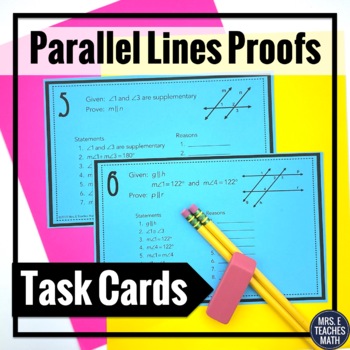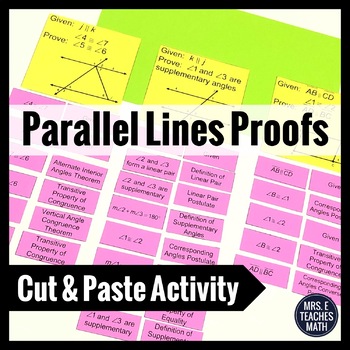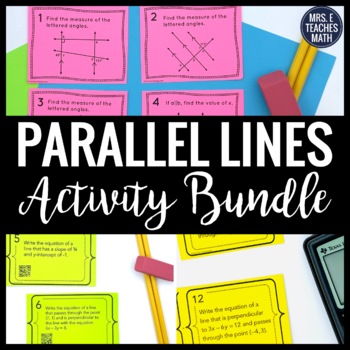Parallel Lines Converse Theorems can be such a hard topic for students. In my opinion, this is really the first time that students really have to pick apart a diagram and visualize what’s going on.
When I start the lesson, I hand each student two cards. One card says “the lines are parallel” the other says “corresponding angles are congruent” (or alternate interior, alternate exterior, same-side interior). I tell the students to “put the cards in order to make a theorem”. This takes them all of 2 seconds.
Then, I remind them of what a converse is. I have them switch the cards. We talk about what is different. This intro takes me less than 5 minutes, but it helps some of the kids a little.
Then, I usually use guided notes. I’m not in love with the notes I use currently. I would like to use some sort of foldable instead. More and more I’m wanting to take the plunge into interactive notebooks.
After the lesson, I use this powerpoint. It’s not fancy at all, but it gets the job done. First, I project the slide onto the whiteboard.
Then, I outline the angles in the question with a marker. When you hit enter to move to the next slide, all of the unnecessary lines disappear. Only the parallel lines are left for the students to see. There are a bunch of problems for the students to practice. I spend as much time as I can on this, because I think it really helps my students. Even on tests, I can see where students outlined the angles to see which lines are parallel.
What do you do to help your students with this challenging topic?









